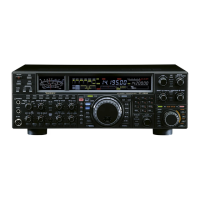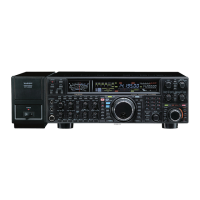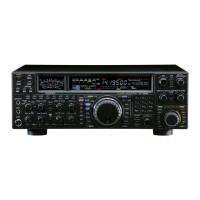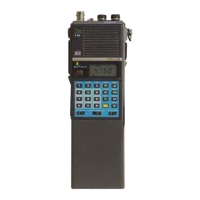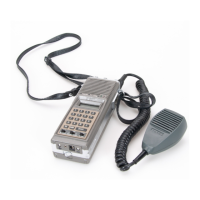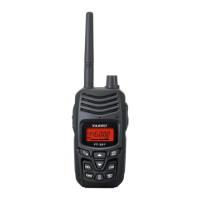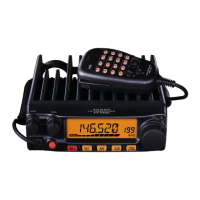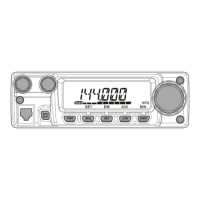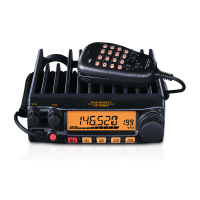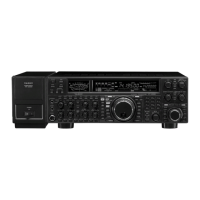
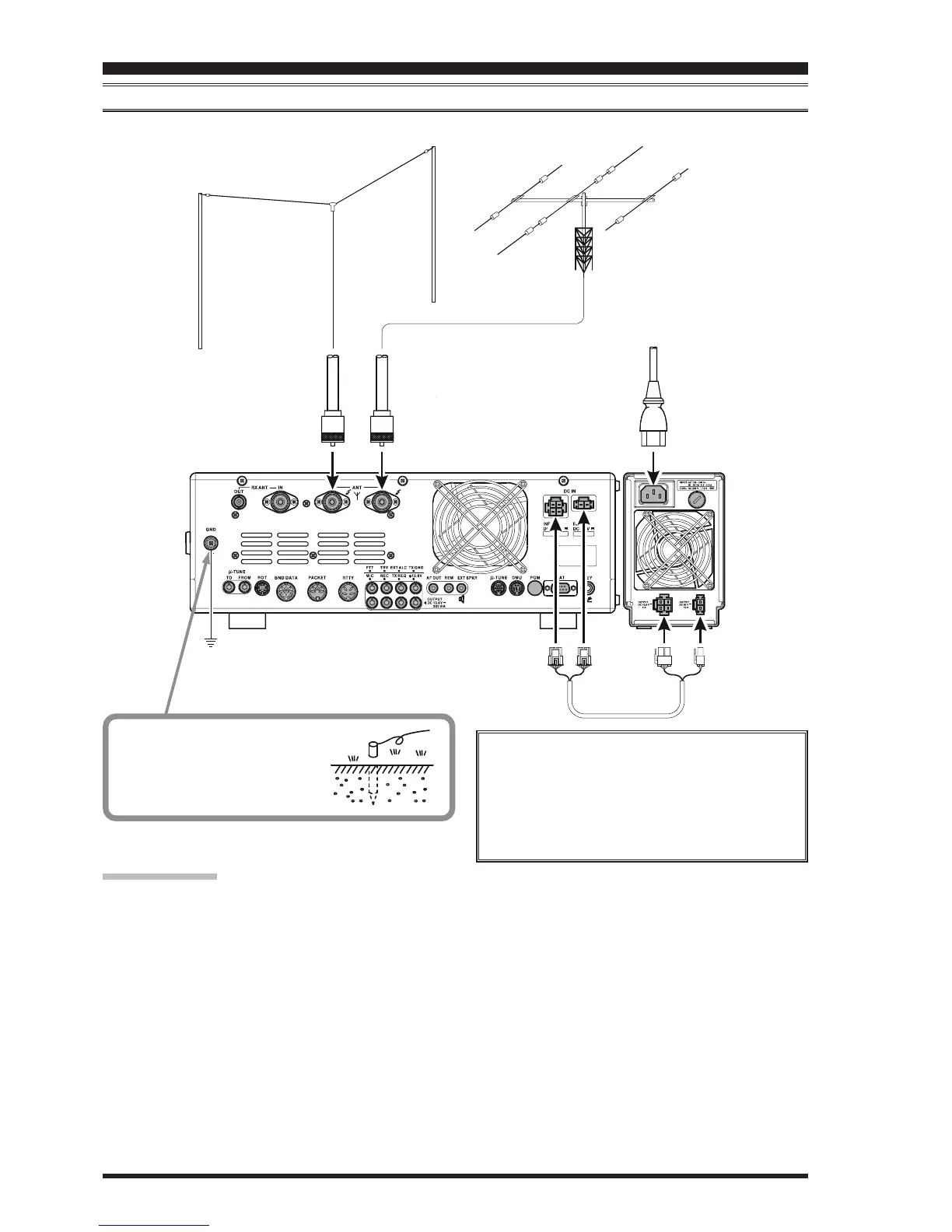 Loading...
Loading...
Do you have a question about the Yaesu FT-2000D and is the answer not in the manual?
| Brand | Yaesu |
|---|---|
| Model | FT-2000D |
| Category | Transceiver |
| Language | English |
Lists items included with the FT-2000D transceiver.
Lists optional accessories for the FT-2000D transceiver.
Procedures for resetting memories, menu settings, or full system defaults.
Guidance on antenna impedance and coaxial cable requirements for optimal performance.
Importance and methods for establishing an effective ground system for safety and performance.
Illustrates proper connection of antenna coaxial cables and the FP-2000 Power Supply.
Shows how to connect microphones and headphones to the transceiver's front panel.
Details on connecting keying devices to the FT-2000D's key jacks.
Instructions for connecting the VL-1000 linear amplifier.
Guidance on connecting other linear amplifiers, including TX/RX switching and ALC.
Instructions for turning the transceiver on and off, and audio muting function.
Engages the PTT circuit for transmitter activation and reception.
Controls the Automatic Antenna Tuner's transmit line engagement and tuning process.
Connects stereo or monaural headphones; disables loudspeaker during use.
Accepts CW keys or paddles; configurable for various keying interfaces.
Reduces illumination intensity of the analog meter and frequency display.
Enables automatic voice-actuated transmitter switching in voice modes.
Allows switching between ANT 1, ANT 2, or RX ANT for reception.
Enables transmit monitor function for checking audio quality.
Activates Parametric Microphone Equalizer and Speech Processor for SSB/AM.
Toggles the internal CW keyer on and off.
Selects receiver input attenuation levels (OFF, -6, -12, -18 dB).
Optimizes receiver front-end characteristics for signal strength and noise.
Selects Main receiver's first IF roofing filter bandwidth (3, 6, 15 kHz, or Auto).
Selects receiver Automatic Gain Control decay time (FAST, MID, SLOW, AUTO).
Turns the IF Noise Blanker on and off for pulse noise reduction.
Determines the meter function during transmission (COMP, ALC, PO, SWR, ID, VDD).
Adjusts monitor audio level (MONI) and speech processor compression (PROC).
Enables or disables CW break-in capability.
Enables CW receiver spotting tone for zero-beating signals.
Adjusts CW keyer speed and CW tone pitch.
Adjusts noise blanker level (NB) and squelch threshold (SQL).
Adjusts microphone input level (MIC) and RF power output (RF PWR).
Sets VOX gain (VOX) and transmitter/keyer delay time (DELAY).
Adjusts audio volume (AF GAIN) and receiver RF gain (RF GAIN).
Controls squelch and gain for the Sub (VFO-B) receiver.
Control Voice Memory, Contest Keyer, and DMU functions.
Selects operating mode (LSB, USB, CW, AM, FM, RTTY, PKT) and VFO (A/B).
Stores (STO) and recalls (RCL) Quick Memory Bank settings.
Selects narrow IF filter bandwidth for SSB, CW, AM, and FM modes.
Activates split frequency operation between Main (VFO-A) and Sub (VFO-B) VFOs.
Monitors transmit frequency during split frequency operation.
Recalls a favorite Menu selection as a shortcut.
Turns the Sub (VFO-B) receiver on/off and mutes it.
Turns the Sub (VFO-B) transmitter on/off.
Adjusts operating frequency, memory recall, and menu selection.
Changes the Main Tuning Dial knob's tuning step to fast.
Toggles locking of the Main Tuning Dial knob to prevent accidental frequency changes.
Selects Amateur bands or performs direct frequency entry.
Allows offsetting the Main (VFO-A) receiving frequency temporarily.
Allows offsetting the Main (VFO-A) transmit frequency temporarily.
Clears any programmed frequency offset in the Clarifier register.
Tunes the Clarifier offset frequency up to ±9.999 kHz.
Tunes the VRF (Variable RF Filter) preselector passband for selectivity.
Turns the VRF filter on and off.
Turns the Main receiver's IF Notch Filter on and off.
Turns the Main receiver's Digital Notch Filter on and off.
Adjusts the center frequency of the IF Notch Filter.
Adjusts IF DSP passband shift and bandwidth.
Turns the Main receiver's CONTOUR filter on and off.
Turns the Main receiver's Digital Noise Reduction on and off.
Selects CONTOUR filter response and adjusts Digital Noise Reduction.
Turns the Sub (VFO-B) receiver on/off.
Turns the Sub (VFO-B) transmitter on/off.
Controls Main or Sub band frequency based on A/B button status.
Selects Main (VFO-A) operating band using the SUB VFO-B knob.
Tunes Main (VFO-A) frequency up/down in 1 MHz steps using SUB VFO-B knob.
Selects memory group using the SUB VFO-B knob.
Selects memory channel using the SUB VFO-B knob.
Selects Sub (VFO-B) operating band using SUB VFO-B knob.
Tunes Sub (VFO-B) frequency up/down in 1 MHz steps using SUB VFO-B knob.
Changes tuning step to 100 Hz for SUB VFO-B when A/B is active.
Determines if SUB VFO-B knob applies to Main or Sub band.
Explanation of ANT, ATT, FLT, IPO, R.FLT, AGC, DNR, DNF, CONTOUR, NOTCH, WIDTH, SHIFT, NB, NAR, PROC, MONI, KEYER, BK-IN, TUNER, HI SWR indicators.
Indicates transmission on the Main band (VFO-A) frequency.
Indicates when the Main (VFO-A) receiver squelch is open.
Shows the Main band (VFO-A) frequency and menu setup information.
Indicates when the Main Tuning Dial knob is locked.
Indicates when the Main Tuning Dial knob's tuning rate is fast.
Indicates when the Three-Band Parametric Microphone Equalizer is activated.
Indicates when Class-A operation is engaged.
Provides a visual CW tuning indication of signal offset or filter peak.
Indicates voice recorder or memory recording activity.
Indicates voice recorder or memory playback activity.
Displays Clarifier offset, Memory Channel Number, or Repeater Shift.
Indicates when the Clarifier function is activated.
Indicates when the FT-2000D is in Memory Recall mode.
Indicates memory contents have been temporarily changed (Memory Tune mode).
Displays the strength of signals received on the Sub band (VFO-B).
Indicates transmission on the Sub band (VFO-B) frequency.
Indicates when the Sub (VFO-B) receiver squelch is open.
Shows the Sub band (VFO-B) frequency and menu setup information.
Displays the currently selected operating mode for the Sub (VFO-B) receiver.
Indicates when the SUB VFO-B knob's tuning rate is fast.
Displays the selected AGC decay time for the Sub (VFO-B) receiver.
Indicates when the Sub (VFO-B) receiver's Noise Blanker is activated.
Indicates when the optional Sub (VFO-B) receiver's narrow filter is selected.
BNC jack providing receiver signal output from antenna jacks.
Type-M jack for a separate receive-only antenna.
Connect main antenna(s) via type-M plug and coaxial feedline.
Internal cooling fan for the power amplifier unit.
Connects to FP-2000 for +13.8 V DC supply.
Connects to FP-2000 for +50 V DC supply for power amplifier.
Terminal for connecting transceiver to a good earth ground.
Jacks for signal input/output of the optional RF μTuning Kit.
Controls Yaesu antenna rotators (G-800DXA, etc.).
Provides band selection data for optional accessories like linear amplifiers.
Input/output for packet TNCs, providing audio and PTT control.
Input/output for RTTY terminal units.
RCA input for manual transmitter activation via footswitch.
RCA input for transmitter audio (AFSK or voice), mixed with mic audio.
RCA jack for low-level RF output to a transverter.
RCA jack for low-level receiver audio output for recording or amplification.
RCA input for negative-going external ALC from linear amplifier.
RCA jack that shorts to ground to enter transmit mode.
RCA jack center pin closed to ground during transmit for peripheral control.
RCA output jack providing regulated 13.8 VDC for external devices.
Dual-channel low-level receiver output for recording or amplification.
Connects optional FH-2 Remote Control Keypad for direct CPU access.
Output jack for external loudspeaker; disables internal speaker.
10-pin MINI-DIN jack for optional RF μTuning Kit control.
8-pin MINI-DIN jack for optional DMU-2000 Data Management Unit.
Covered 9-pin MINI-DIN jack used at the factory; do not connect equipment.
9-pin serial DB-9 jack for external computer control via serial cable.
1/4-inch phone jack for CW key or paddle; 2-contact plug not usable.
Main ON/OFF switch for the FP-2000 Power Supply.
Socket for connecting the supplied 3-wire AC line cord.
Internal fan for cooling the power supply unit.
Provides +13.8 V DC output (max 6 Amps) to the FT-2000D.
Provides +50 V DC output (max 12 Amps) to the FT-2000D.
Holder for a 15 Amp fuse, used for 100-120 VAC or 200-240 VAC operation.
Procedure for operating on the 5167.5 kHz emergency frequency.
How to use CLAR to offset receive/transmit frequencies for DX pile-ups or drifting stations.
Prevents accidental frequency changes by locking the Main Tuning Dial knob.
Reduces illumination levels for meters and displays, with customizable brightness.
Simultaneous reception on two frequencies using Main and Sub receivers.
Configuring headphone audio mixing schemes (SEP, Con1, Con2) for dual receive.
Receiving an AM signal through two receivers on opposite sidebands for phase distortion analysis.
Receiving the same signal through different bandpass filters for spatial perception.
Automatic recording and playback of the last 15 seconds of incoming receiver audio.
Remote recording/playback functionality using the FH-2 keypad.
Allows selection of preferred Amateur bands for band selection loop using SUB VFO-B knob.
Stores up to three favorite frequencies and modes for each band's VFO register.
Provides quick access to frequently used Menu selections via the front panel [C.S] button.
Controls Yaesu rotators (G-800DXA, etc.) from the FT-2000D front panel.
Covers keyboard frequency entry, SUB VFO-B knob tuning, and microphone UP/DWN switches.
High-Q preselector circuit for out-of-band signal rejection.
Filters providing protection to subsequent IF and DSP stages.
DSP filter for suppressing or enhancing specific frequency components.
Adjusts the passband center frequency of the IF DSP filtering.
Adjusts the width of the IF DSP filtering.
High-Q notch filter to reduce or eliminate interfering carriers.
DSP system to reduce random noise using algorithms.
Auto-notch filter to null interfering beat notes.
System to compensate for fading and maintain constant audio output level.
Allows audio volume to rise gently with signal strength for better discernibility.
Adjusts the Q-factor of the IF DSP filters via the Menu.
Adjusts the shape factor of the receiver IF DSP filters via the Menu.
Utilizes VRF for out-of-band signal rejection and improved reception.
Provides narrow-band IF roofing filters for protection and improved reception.
Suppresses or enhances frequency components for better sound and readability.
Varies DSP filter passband higher or lower to reduce or eliminate interference.
Varies DSP IF passband width to eliminate or enhance incoming signal fidelity.
Slices out interfering carrier signals from inside the receiver passband.
Reduces random noise using algorithms for SSB and other modes.
Auto-notch filter to null interfering beat notes inside the receiver passband.
Provides one-touch selection of narrow IF DSP filter settings for various modes.
Reduces noise caused by automotive ignition systems.
Compensates for fading and maintains constant audio output level.
Allows audio volume to rise slightly with signal strength for better discernibility.
Silences the Main (VFO-A) receiver temporarily during Dual Receive.
Procedures for operating the built-in Automatic Antenna Tuner.
Explanation of ATU functionality, memory storage, and SWR conditions.
Procedure for replacing the ATU backup battery.
Adjusts transmitted bandwidth for fidelity or talk power.
Provides precise control over low, mid, and treble ranges for voice waveform.
Increases talk power and improves intelligibility using compression.
Provides ultra-low distortion SSB transmission with 75 Watts power output.
Stores and recalls repetitive voice messages (up to 20 seconds per memory).
Utilizes Voice Memory functions via the FH-2 Remote Control Keypad.
Hands-free, automatic transmitter activation based on voice input.
Allows listening to transmitted signal quality via the Monitor feature.
Utilizes TX Clarifier for split TX/RX operation in casual pile-ups.
Synchronizes Sub (VFO-B) frequency with Main (VFO-A) frequency.
Provides flexibility in Split Frequency operation for DX-pedition use.
Sets a one-touch +5 kHz offset for transmit frequency on Sub (VFO-B).
Ensures precise frequency alignment with other CW stations.
Tries receiving using the opposite sideband to eliminate interference.
Adjusts transmitter hang time for semi-break-in CW operation.
Adjusts receiver passband and CW carrier pitch for listening preference.
Activates APF for a very narrow audio bandwidth.
Enables automatic CW message sending using keyer paddle or text entry.
Procedure for storing CW messages into memory registers.
Programs CW messages using a keyer paddle.
Checks stored CW memory contents without transmitting RF energy.
Transmits programmed CW messages using the [BK-IN] button.
Sets or resets the initial contest number for incremental sending.
Reduces the current contest number by one using the [F6(DEC)] key.
Programs CW messages using text entry for accurate character spacing.
Programs text messages into memory registers using the FH-2 keypad.
Verifies stored CW memory contents via sidetone, without RF transmission.
Transmits programmed CW messages using the FH-2 keypad.
Basic steps for selecting FM mode, frequency, and transmitting.
Procedure for setting up repeater shifts and CTCSS tones for FM communication.
Overview of regular, PMS, and QMB memory storage capabilities.
Stores and recalls operating parameters into five quick access memories.
Covers memory storage, recall, moving data, and memory tune operation.
Checks current memory channel contents without overwriting.
Deletes contents of a selected memory channel.
Transfers currently selected memory channel data to the Main band (VFO-A) register.
Allows tuning off a memory channel without overwriting its contents.
Groups memory channels for easier identification and selection.
Enables or disables Memory Group operation.
Recalls memories only within a particular Memory Group.
Scans VFO frequencies for signals strong enough to open squelch.
Scans memory channels for signals strong enough to open squelch.
Basic setup procedures for configuring the radio for data modes.
Engages Packet operation in LSB or PKT-FM mode.
Directs attention to setup steps for RTTY operation.
Engages RTTY operation using LSB or USB injection.
Steps to configure the radio for transverter use.
Guidance on operating frequency setup and band selection for transverters.
Adjusts display to show actual band when using a transverter.
How to navigate and adjust menu settings for transceiver customization.
Procedure to reset all Menu settings to their original factory defaults.
Selects display color when DMU-2000 is connected.
Sets meter brightness level when DIM is selected.
Sets frequency display brightness level when DIM is selected.
Selects parameter viewed on the Tuning Offset Indicator.
Selects peak hold time for the Sub (VFO-B) receiver's S-meter.
Selects the starting point for the rotator controller's indicator needle.
Adjusts rotator indicator needle precisely to the starting point.
Sets the audio output level from the voice memory.
Sets the microphone input level to the voice memory.
Sets the interval time between beacon message repeats.
Selects Contest Number cut format for imbedded contest numbers.
Enters initial contest number for increment/decrement during QSOs.
Permits CW message entry for message register 1 (Keyer or Function Keys).
Permits CW message entry for message register 2 (Keyer or Function Keys).
Permits CW message entry for message register 3 (Keyer or Function Keys).
Permits CW message entry for message register 4 (Keyer or Function Keys).
Permits CW message entry for message register 5 (Keyer or Function Keys).
Sets the method of antenna selection (Band or Register).
Sets the beep level.
Sets the transceiver's computer-interface baud rate for CAT.
Sets the Time-Out Timer countdown for CAT command input.
Enables/Disables the RTS port of the CAT jack.
Enables/Disables Data LED flashing with CAT commands.
Enables/Disables Memory Group Operation.
Selects the tuning offset for the Quick Split feature.
Selects the gain curve of the AGC amplifier (normal or sloped).
Selects audio mixing modes for headphones during Dual Receive.
Adjusts the gain of the Contour filter.
Adjusts the Q-factor of the Contour filter.
Selects the bandwidth of the DSP NOTCH filter (Narrow or Wide).
Selects passband characteristics of the DSP filter for CW mode (Soft or Sharp).
Selects the shape factor of the DSP filter for CW mode (Steep, Medium, Gentle).
Selects the passband of the DSP filter for CW 'Narrow' mode.
Selects passband characteristics of the DSP filter for PKT mode (Soft or Sharp).
Selects the shape factor of the DSP filter for PKT mode (Steep, Medium, Gentle).
Selects the passband of the DSP filter for PKT 'Narrow' mode.
Selects passband characteristics of the DSP filter for RTTY mode (Soft or Sharp).
Selects the shape factor of the DSP filter for RTTY mode (Steep, Medium, Gentle).
Selects the passband of the DSP filter for RTTY 'Narrow' mode.
Selects passband characteristics of the DSP filter for SSB modes (LSB/USB).
Selects the shape factor of the DSP filter for SSB modes (LSB/USB).
Selects the passband of the DSP filter for 'Narrow' SSB mode.
Sets scan start frequency for FIX mode Spectrum Scope on 160 m band.
Sets scan start frequency for FIX mode Spectrum Scope on 80 m band.
Sets scan start frequency for FIX mode Spectrum Scope on 60 m band.
Sets scan start frequency for FIX mode Spectrum Scope on 40 m band.
Sets scan start frequency for FIX mode Spectrum Scope on 30 m band.
Sets the Tuning Dial knob's tuning speed except FM modes.
Enables/disables 'Fine' tuning speed in CW, RTTY, PKT-SSB modes.
Selects tuning steps for the [SUB VFO-B] knob when [MHz] button is pressed.
Selects tuning steps for microphone's [UP]/[DWN] keys in AM mode.
Selects tuning steps for microphone's [UP]/[DWN] keys in FM modes.
Sets the Tuning Dial knob's tuning speed in FM mode.
Programs bands to be skipped when selecting bands using SUB VFO-B knob.
Selects center frequency for the low range of the parametric microphone equalizer.
Adjusts the equalizer gain of the low range of the parametric microphone equalizer.
Adjusts the Q-factor of the low range of the parametric microphone equalizer.
Selects center frequency for the middle range of the parametric microphone equalizer.
Adjusts the equalizer gain of the middle range of the parametric microphone equalizer.
Adjusts the Q-factor of the middle range of the parametric microphone equalizer.
Selects center frequency for the high range of the parametric microphone equalizer.
Adjusts the equalizer gain of the high range of the parametric microphone equalizer.
Adjusts the Q-factor of the high range of the parametric microphone equalizer.
Selects center frequency for low range parametric EQ with speech processor activated.
Adjusts gain for low range parametric EQ with speech processor activated.
Adjusts Q-factor for low range parametric EQ with speech processor activated.
Selects Class-A or Class-AB amplifier operation and adjusts Bias.
Selects a maximum output power limit.
Configures the [RF PWR] knob behavior.
Enables/Disables the TX GND jack on the rear panel.
Selects max output power limit for driving external linear RF amplifier.
Selects audio input source for triggering TX during VOX operation.
Covers Rx/Tx frequency ranges, stability, operating temperature, modes, steps, impedance, and power consumption.
Details power output, modulation types, FM deviation, harmonic radiation, and IMD.
Specifications for the external power supply unit.
Details receiver circuit type, IFs, sensitivity, squelch, selectivity, and image rejection.
